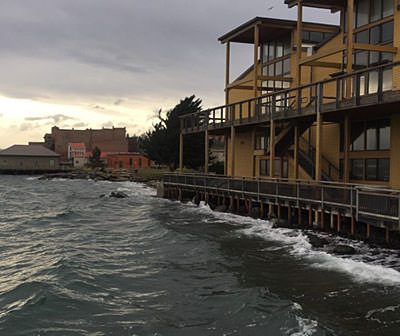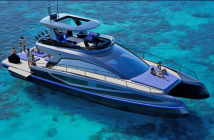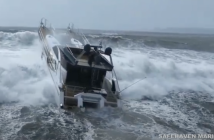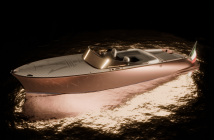NOAA has just issued a High Tide Bulletin for this spring, predicting when and where you can expect higher tides than normal. It covers the entire coastline of the U.S. You can click on the link at the bottom of this story to go to a map with details for various parts of the country. Here’s the report:
The rising and falling of the sea is a phenomenon upon which we can always depend. Tides are the regular rise and fall of the sea surface caused by the gravitational pull of the moon and sun and their position relative to the earth. There are some factors that cause the tides to be higher than what is “normally” seen from day to day. This bulletin tells you when you may experience higher than normal high tides for the period of time between March and May 2020.
We also publish annual high tide flooding reports that present a broad outlook of what to expect for a given year in terms of high tide flooding, as well as a summary of high tide flooding events for the previous calendar year.
Higher than normal high tides alone do not necessarily cause coastal flooding. However, they are becoming increasingly impactful due to continued sea level rise. High tide flooding that inundates busy streets, and washes out beaches is more likely to occur during these periods depending on your location along the coast. More severe flooding may result if adverse weather—heavy rains, strong wind or big waves—conditions are present.
Northeast outlook
Includes Maine, New Hampshire, Massachusetts, Connecticut, and New York
When will the tides be higher than normal?
- March 9-13
- April 7-11
- May 6-10 (The predicted tides at several locations will be some of the highest of the year)
Why will they be higher than normal?
- A perigean spring tide will be occurring. This is when the moon is either new or full and closest to earth. Higher than normal high tides and lower than normal low tides will occur.
- Tides will increase leading up to and after the June 21 summer solstice, due to the position of the sun relative to the earth’s equator.
- Mean sea level is typically higher in the late spring due to changing weather patterns and increasing water temperatures.
What kind of impact might I expect along the coast?
- Due to the topography of the northeast (less low lying areas), high tides alone will likely not cause a significant impact on the coast unless accompanied by a storm or strong winds.
Where might I expect high tide flooding?
Tide stations at the following locations have the greatest chance of seeing high tide flooding:
- Bar Harbor, ME; Portland, ME; Boston, MA; Providence, RI; Kings Point, NY.
Regional outlook Text Only
Northeast outlookhttps://oceanservice.noaa.gov/news/high-tide-bulletin/spring-2020/
https://oceanservice.noaa.gov/news/high-tide-bulletin/spring-2020/Includes Maine, New Hampshire, Massachusetts, Connecticut, and New York
When will the tides be higher than normal?
- March 9-13
- April 7-11
- May 6-10 (The predicted tides at several locations will be some of the highest of the year)
Why will they be higher than normal?
- A perigean spring tide will be occurring. This is when the moon is either new or full and closest to earth. Higher than normal high tides and lower than normal low tides will occur.
- Tides will increase leading up to and after the June 21 summer solstice, due to the position of the sun relative to the earth’s equator.
- Mean sea level is typically higher in the late spring due to changing weather patterns and increasing water temperatures.
What kind of impact might I expect along the coast?
- Due to the topography of the northeast (less low lying areas), high tides alone will likely not cause a significant impact on the coast unless accompanied by a storm or strong winds.
Where might I expect high tide flooding?
Tide stations at the following locations have the greatest chance of seeing high tide flooding:
- Bar Harbor, ME; Portland, ME; Boston, MA; Providence, RI; Kings Point, NYhttps://oceanservice.noaa.gov/news/high-tide-bulletin/spring-2020/




